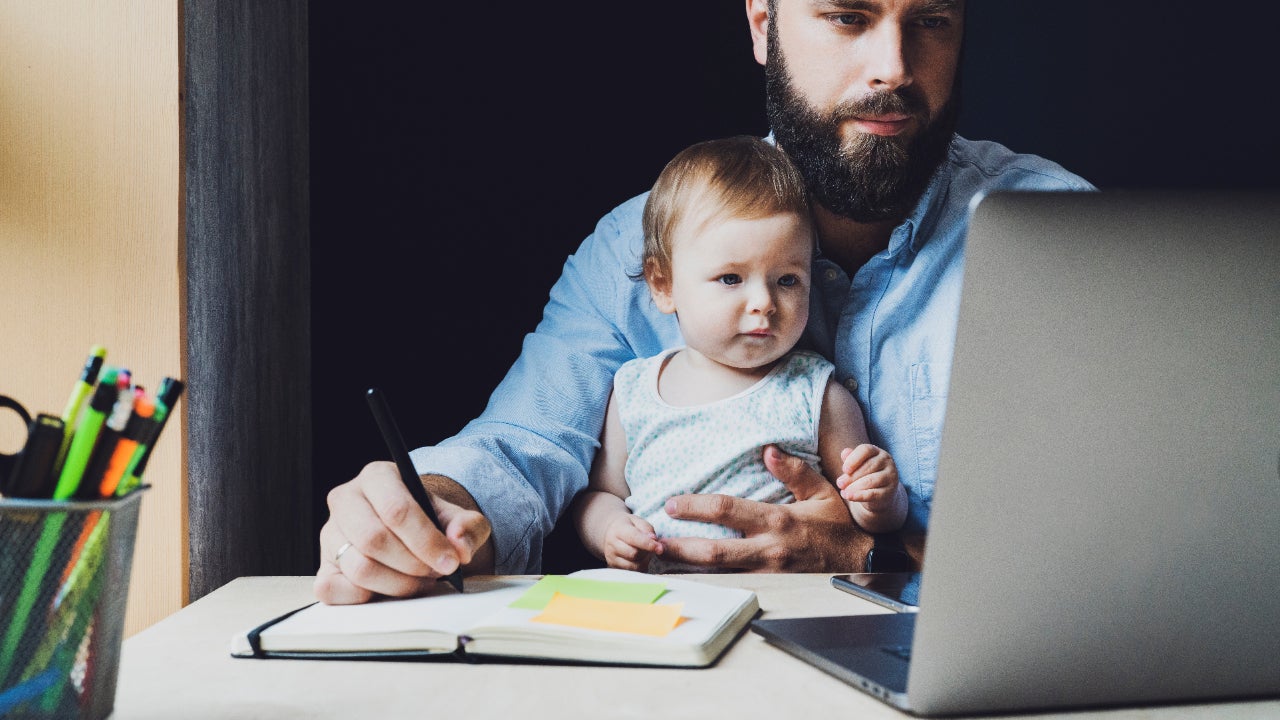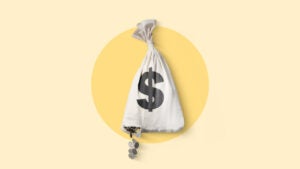How to rebuild your finances after experiencing financial abuse




Economic or financial abuse may not be the typical focus of discussions about abusive relationships, but it’s more common than you might think. Financial abuse occurs in 99 percent of abusive relationships and is one of the top reasons survivors stay in or return to abusive relationships, according to the National Network to End Domestic Violence (NNEDV).
- Financial abuse occurs in 99 percent of domestic abuse cases (NNEDV)
- 78 percent of Americans do not recognize financial abuse as a form of domestic violence (NNEDV)
- 3 out of 4 victims stay with their abusers longer for economic reasons (NNEDV)
- The total cost of domestic violence in the U.S. exceeds $8.3 billion a year (Center for Domestic Peace)
“The devastating impact of financial abuse lasts longer than other areas of harm from an abusive relationship,” says Shannon Thomas, a licensed clinical social worker and certified clinical trauma professional who has conducted extensive research on financial abuse. “It undermines the survivor’s ability to navigate through life in every way.”
So, what is financial abuse?
The NNEDV says financial abuse can take many forms, but it generally includes “tactics to cancel information, limit the survivor’s access to assets, or reduce accessibility to the family finances.” Some abusers may use manipulation to covertly remain in control of a survivor’s finances while others resort to outright intimidation or threatening behavior. No matter how financial abuse presents itself in a relationship, rebuilding financial independence takes time and patience.
How to identify signs of financial abuse
Financial abuse can look different for every survivor and occur without instances of verbal assault or physical violence.
Financial abuse survivors aren’t restricted to women or those who aren’t in a bread-winning role — anyone can experience financial abuse. Further, romantic relationships aren’t the only type of relationship in which someone might be exploited for financial gain; business partners, roommates and family members can all be financial abusers. According to one study by researchers at the University of Southern California, the most commonly reported form of elder abuse is financial abuse carried out by relatives.
Some common behaviors that can indicate financial abuse include:
- Restricting access to financial accounts
- Preventing someone from holding a job
- Placing an unhealthy financial burden on someone
- Opening accounts in another person’s name
- Limiting purchases of needed items
- Sabotaging career success
- Siphoning away shared funds for individual spending
If you begin to notice a pattern of withholding financial information or other instances of manipulation, controlling behavior or isolation, that could be a sign of abusive behavior.
Assess your situation and make a plan
In any instance of abuse, your safety should be your top priority. If you feel you are in danger, contact the National Domestic Violence Hotline at 800-799-7233 or a local hotline in your area. You can search a directory of domestic violence programs and shelters near you at DomesticShelters.org.
Some cases of financial manipulation may be solved with a conversation. If you feel safe raising the topic, you might try talking with your partner about the behavior you’ve noticed.
“It’s really about … open communication about money,” Thomas says. “Not just talking about it, but seeing bank statements and being able to know what income is brought into the situation, whether it’s a relationship or business.” She recommends setting your own boundaries to ensure decisions aren’t made unilaterally by the exploitative party.
Thomas warns that when financial abusers are confronted about the behavior, there is a chance of retaliation by hiding money. “I like a lot of folks to get their house in order, get their ducks in a row and get some things in place so that they have a little bit of cash… if that abuser decides to start moving money around and they have to do things very quickly,” Thomas says.
Details to consider if you plan to leave
The first step in exiting a financially abusive relationship is to develop a plan.
“First, assess the damage,” says Leslie Tayne, a debt relief attorney based in Melville, New York.
This includes:
- Checking your credit report
- Taking inventory of all credit in your name
- Reviewing bank statements to see how much debt you owe and to whom
- Freezing your credit if you’re worried about your abuser opening new accounts in your name
Becoming financially independent, especially after experiencing abuse, takes some time. To retake control of your finances, Tayne suggests that survivors focus on educating themselves on topics such as financial planning.
Depending on your situation, Tayne also recommends contacting a family law attorney to find out your legal rights. If you do this, document specific incidents of abuse and keep important documents stored somewhere secure and out of reach from the abuser.
How to rebuild after financial abuse
Once you’ve done what you can to protect your finances, what comes next? The next chapter can feel overwhelming but is ultimately an opportunity for you to lay a strong foundation for the rest of your life.
Here are steps you can take to establish your financial independence and help ensure long-term financial health.
Open a bank account and start saving
Ideally, you would open a bank account while planning an escape, but not everyone has the luxury of planning ahead. Having your own secure source of money is step one toward financial independence.
Choose a reputable bank that fits your needs. Some offer in-person budgeting help or options to help customers manage their finances online. Larger national banks typically offer a wider range of services and accessibility, while smaller local banks or credit unions can bring a personal touch to the banking process. Do your own research and ask friends or family for recommendations. Also, consider the fees associated with your account.
Opening a bank account is typically a simple process. You’ll need your Social Security number and a valid ID. Some banks require minimum deposits for opening certain types of accounts. If you have enough money for the minimum deposit on a savings account, open both a checking and savings account and start contributing to savings as you’re able.
Prioritize saving a little of every paycheck for an emergency fund. Experts recommend directing 20 percent of your paycheck toward savings, but begin with whatever you’re able to save. Not having the money to cover unexpected expenses can have a lasting impact on your finances and cause you to go into debt.
Aim to have enough money in an emergency fund to cover at least three to six months’ worth of essential expenses. Once you have that saved, consider putting money aside for other financial goals (such as a vacation fund, money to go back to school or the deposit on a house) or investing for retirement.
Keep in mind that you should use money from an emergency fund to pay for things like emergency car repairs or unexpected medical bills or to cover expenses if you lose your income.
Make a budget
Once you have your own account set up, the next step is to make a budget that fits your needs. A budget will help you understand exactly where your money is going.
To start planning your budget, determine what works best for you and your financial goals. There are several techniques that you can try:
- 50/30/20 budget: This method separates your take-home pay into three buckets: needs (rent, transportation, water and other bills), wants (dining out, shopping and entertainment) and savings (your savings account and other financial goals). Under this plan, needs should account for 50 percent of your budget, wants should represent 30 percent and 20 percent should go toward savings.
- 80/20 method: This is a simpler version of the 50/30/20 method, in which you dedicate 20 percent of your income to savings and freely spend the rest. Depending on how aggressive you want to be with your savings, you can change the percentage that you set aside.
- Envelope method: For a more visual budget, label individual envelopes with certain expense categories like wants, needs and savings. Or do something more detailed: rent, utilities, groceries, entertainment and savings. Then set aside the amount you want to earmark for each category for the month into its designated envelope. It’s generally safer to keep money in a bank rather than at home, however.
- Budgeting apps: If you have a smartphone or tablet, connect your bank accounts and credit cards to an app like Mint or You Need A Budget (otherwise known as YNAB), enabling you to track bills, create budgets, develop spending plans and more.
Make a plan to tackle credit card debt
To prioritize their safety, many financial abuse survivors must leave a dangerous environment before they’re financially independent. If you’ve had to support yourself with credit cards and now have overwhelming balances, it’s important to create a strategy for paying them down.
Balance transfer credit cards can help you manage payments, consolidate debt and cut interest costs. Here’s how it works: You transfer one or more credit card balances to a single card, ideally one that offers 0 percent interest for several months. This way, you have a while to get on your feet and pay what you can without worrying about accumulating interest charges.
The best balance transfer credit cards — those that offer 0 percent interest for up to 21 months — usually require at least good credit. However, there are balance transfer cards for people with bad credit or no credit, too. You probably won’t receive an interest-free window, but the ongoing interest rate may be lower than what you currently pay.
Another option for those with bad or no credit is a debt consolidation loan, which allows you to combine multiple debts into an unsecured personal loan.Though you’re likely to receive a higher interest rate the lower your credit score is, it’s possible to get a debt consolidation loan with bad credit. Before making the decision to get a debt consolidation loan, make sure the interest you’ll be paying is lower than what your credit card (or other debts) are currently charging, and take into account any fees associated with the loan.
Build your credit
Your credit score is important. Lenders use it to determine whether to loan you money. Without a good credit score, you may be denied personal loans, mortgages, vehicle financing and more. Or you may receive unfavorable terms on credit, like a higher interest rate.
There are lots of ways to build credit — such as taking out a personal loan or making car payments — but one of the easiest is to apply for a credit card and make timely monthly payments.
With a personal loan or many other types of credit, you commit to borrowing money long-term and paying interest. This isn’t necessarily bad, but there’s a cheaper option if you just want to build credit. With a credit card, you can avoid paying interest, build your credit and steer clear of debt. Just spend within your means and set up automatic full-balance payments at the end of each billing cycle, and then watch your credit score climb over time.
If you’re rebuilding your finances or are a first-time credit card user, there are many great options that charge no annual fee, so you won’t take on any additional costs that may hinder your progress. Here are a few things to consider:
- APR (interest rate): Ideally, you’ll be able to avoid interest entirely by paying off your balance in full every month. But the road to financial independence is rarely perfect, and the APR is important if you might have to carry a balance at some point. The higher the APR, the more interest you’ll have to pay on your purchases. With a low credit score or no credit history, you’re more likely to qualify for cards with higher interest rates. If you have good credit, however, you may be able to secure a credit card with a promotional 0 percent APR — which can give you several months to get on your feet without worrying about interest.
- Secured credit cards: Secured cards require a deposit that acts as your line of credit. For example, if you put $250 down as a deposit, your credit limit on that card might be $250. This is a solid option for those starting from scratch with no credit history. After a year of responsible spending and paying off your balance on time each month, card issuers typically will return the deposit.
- Authorized users: Becoming an authorized user on a trusted friend’s or family member’s account can help you build a credit history on your own credit report. Be sure they have a good credit score and healthy spending habits, and develop a plan for how much you are allowed to spend each month and how you’ll pay back that amount.
It’s important to establish healthy credit habits from the beginning of your credit journey. Try to avoid spending more than you can pay off at the end of each month, always pay your bill on time and regularly check your credit report for inaccuracies.
More resources to help you rebuild
You don’t have to go through this process alone. Surround yourself with trustworthy friends and family, and don’t be afraid or ashamed to ask for help when you need it. You can also explore local and national programs available to help get you back on your feet.
Local food banks
In the first few months after leaving, it may feel difficult to even put food on the table. There are local food banks throughout America that help feed individuals and families. You can search online for food banks in your area or check out Feeding America’s search tool.
Government assistance
Federal benefit programs can help you get back on your feet after leaving an abusive situation. Programs are available to help qualifying families and individuals pay for groceries, health care, housing and more. Some programs, such as Temporary Assistance for Needy Families (TANF), also offer non-cash benefits like child care and job training.
Domestic abuse coalitions
Many states have coalitions against domestic violence. These organizations can offer assistance to survivors looking for help getting back into the workforce, connecting with other survivors, finding support groups and more. Check out the National Domestic Violence Hotline for a list of national and state organizations.
Never give up
Rebuilding your life and your finances “after abuse must be viewed as a marathon and not a sprint,” Thomas says. “Every step toward financial stability post-abuse should be recognized and celebrated. Otherwise, the rebuilding process can become discouraging.”
This chapter in your life can be exhausting and exhilarating and just about every emotion in between. The important thing is never to give up. Working to establish and maintain your financial health is a lifelong journey, but just start the process by taking it one step at a time.
If you or a loved one is suffering domestic abuse (including financial abuse), reach out for help. Contact the National Domestic Violence Hotline at 800-799-7233.
Why we ask for feedback Your feedback helps us improve our content and services. It takes less than a minute to complete.
Your responses are anonymous and will only be used for improving our website.
You may also like

How to make a zero-based budget

How to deal with financial anxiety



